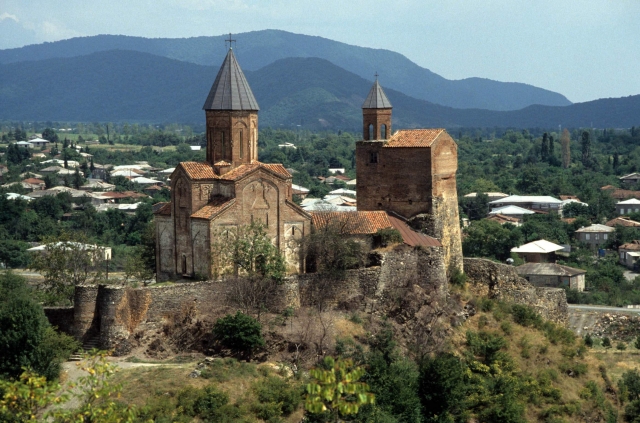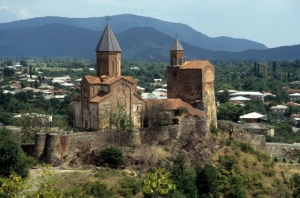Management Plan Presented for UNESCO World Heritage Site Gelati Monastery
A presentation was held to discuss the management plan of Gelati Monastery which is a cultural heritage recognized by UNESCO in 1994. The presentation was lead by head of the planning committee, Davit Khoshtaria and was attended by Deputy Minister of the Ministry of Culture and Monument Protection of Georgia, Levan Kharatishvili, along with many other interested and honorary guests.
Davit Khoshtaria, head of the planning committee: “The management plan is based on a value-led approach that includes cultural and natural values”. To emphasise the necessity of his management plan, Khoshtaria went on to list the most important aspects and values that Gelati monastery and the buffer zone holds, such as cultural heritage, landscape, spiritual importance, and social and economic aspects. The main challenges, as he said, remain the management as well as threats such as natural hazards, air pollution, visitor pressure, accommodation for the increasing numbers of monks and risks of impact by military conflict. Regarding other issues to be taken into consideration, such as the value of stakeholders, he said: “Consultation through public hearings is essential to allow stakeholders to initiate output.”
“The authenticity of the Monastery is fully preserved, Khoshtaria said. “The Gelati Monastery Rehabilitation Project – commonly known as the Conservation Master Plan, has guided the most important rehabilitation works since 2008. The Gelati Monastery Complex Rehabilitation Project has been the basis for the preservation of the authenticity of the monument, restoration and rehabilitation of all its components and the same time its presentation to visitors and its utilization by the clergy.”
Overall, what drew everyone’s full attention was the matter of private ownerships near and within the Monastery location, meaning some construction sites may soon appear within the walls of Gelati causing the view, which has been there since the 12th century, to be blocked and reducing the beauty of sites such as the watch tower, the church of St. Elijah, the Motsameta Monastery and some bridges from the medieval period.
It is hoped that UNESCO will be satisfied with the progress that has been and will be made in order to eradicate all existing issues concerning the Monastery.
David Lolidze











